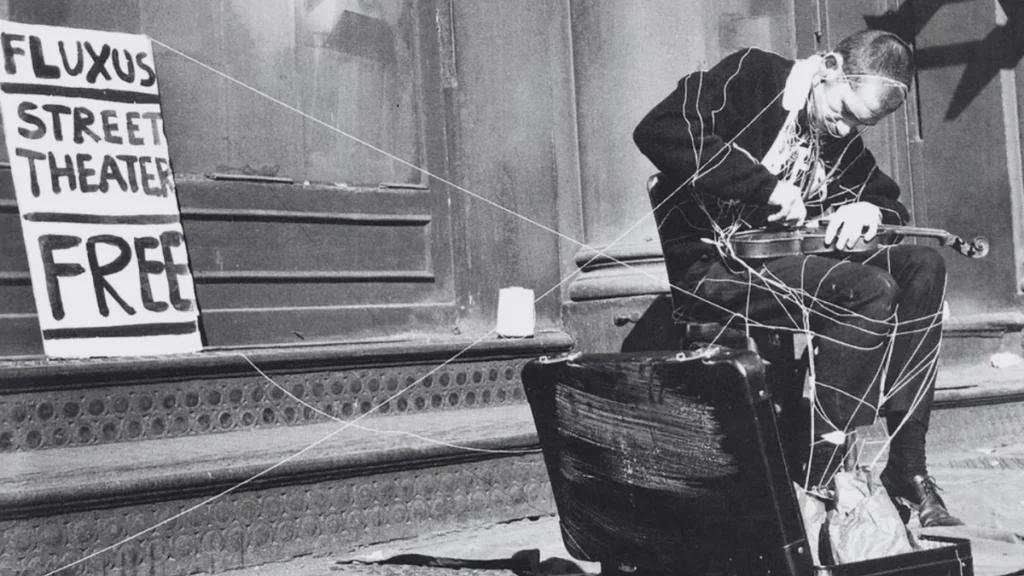Fluxus emerged in the early 1960s as an international artistic movement that sought to break boundaries between languages, spaces, and traditional roles of art. More than a style or formal school, Fluxus became a network of artists, musicians, poets, and performers who shared an experimental and anti-hierarchical stance. Its origin relates to gatherings organized by George Maciunas, a central figure in the group’s organization and diffusion, including names like Nam June Paik, Yoko Ono, Dick Higgins, Alison Knowles, and Ben Vautier.

The term “Fluxus” carries the idea of flow, movement, and mutability. This concept translated into rejecting the artwork as a fixed or isolated object. Performances, events, and “scores” (instruction sheets) replaced the notion of permanent works with reproducible, reinterpretative, and adaptable actions in different contexts. For Fluxus, the process and shared experience mattered more than the material result.
Criticism of the Market and Audience Participation
The movement also strongly criticized the art market and institutions. Fluxus production avoided monumentality and exclusivity logic, favoring simple materials, everyday gestures, and reproducible formats. This choice represented a political stance that questioned the system turning art into merchandise and artists into untouchable authors. By bringing art and life closer, Fluxus encouraged audience participation and shifted creation toward collaboration.
One of Fluxus’s most recognizable marks was its use of humor, irony, and absurdity. Works like Ono’s “event scores” or Paik’s performances included minimal gestures, repetitive actions, or provocations that subverted expectations. Thus, the movement not only dismantled artistic conventions but also stimulated new forms of attention and perception. The apparent simplicity of actions hid a reflection on the structure of art and its place in everyday life.
Fluxus Experimentations and Legacy
Although strongly associated with performative arts, Fluxus also expanded its experimentation into music, video, and publications. The presence of composers linked to experimental music, such as La Monte Young and others close to John Cage, helped integrate sound and silence as central elements in proposals. Nam June Paik, in turn, paved the way for video art by exploring television as a creative medium, within the group’s spirit of radical experimentation.
Over time, Fluxus’s influence became diffuse but remains noticeable in multiple areas of contemporary art. Interest in participatory practices, open works, and collaborative processes carries much of its heritage. Although the movement resisted formalization, its legacy is recognized as one of the most important forces in consolidating conceptual and processual art.
In today’s context, revisiting Fluxus means revisiting a moment when art freed itself from rigid categories and embraced risk, instability, and direct experience. By dissolving the boundary between art and life, the movement not only expanded the field of artistic practices but also invited the public to rethink their role as active participants in the flow of creation.



